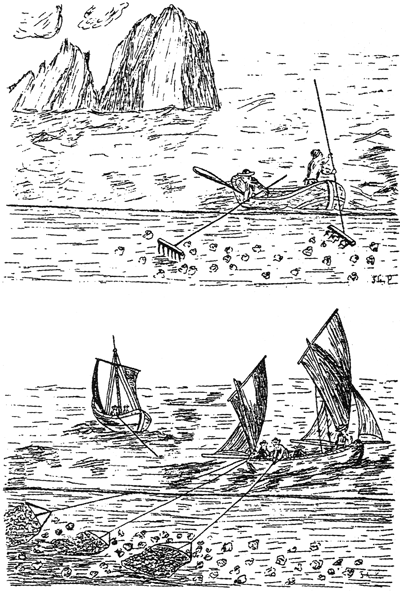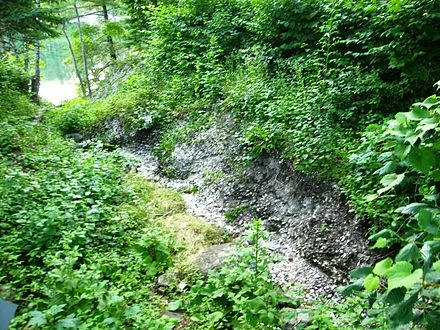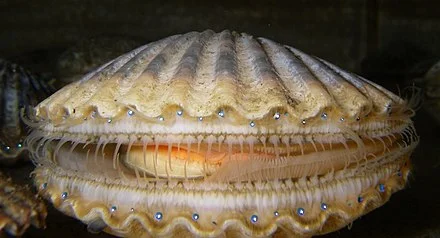
Two sides of oyster farming
Excerpted from from an ecoRI News (ecori.org) article. To read the full article, please hit this link.
Oysters provide food, clean the water, generate jobs and create fish habitat, but shellfish farms have encountered opposition from residents who say they mar the appearance of their views and interfere with their use of the water.
Two recent public presentations on aquaculture focused on restorative aquaculture and how it is used to improve marine ecosystems in the United States and the different ways people perceive aquaculture facilities that grow shellfish. The talks — on March 21 and April 6 — were part of a series of educational webinars organized by the Narragansett Bay Special Area Management Plan (SAMP) of the Rhode Island Coastal Resources Management Council (CRMC).
Eat oysters to fight global warming
“Still-Life with Oysters,’’ by Alexander Adriaenssen
From ecoRI News (ecori.org)
Eating oysters is good for the environment, according to a pair of Narragansett Bay-centric experts. Scientists Robinson Fulweiler, of Boston University, and Christopher Kincaid, from the University of Rhode Island’s Graduate School of Oceanography, shared their latest findings during a webinar last fall.
Fulweiler studies the impact that wild and aquaculture oysters have on their surrounding waters. A single oyster can filter up to 50 gallons of water daily. Their most important service, and the one Fulweiler studies most, is removing nitrogen from marine waters that could trigger algal blooms.
“Aquaculture, as well as restored oyster reefs, have high rates of nitrogen removal,” Fulweiler said.
Excessive nitrogen in waters such as Narragansett Bay is dangerous for aquatic habitats and marine life, as it can feed toxic blooms. These events are also linked to low levels of oxygen in the water, which can lead to fish kills like the one in Greenwich Bay in 2003 that killed tens of thousands of fish.
Oysters, including those in aquaculture operations, help out by removing nitrogen and other pollutants from stressed waters. Instead of being biologically available to feed algae growth, the chemical used in fertilizers is released into the atmosphere as nitrous oxide. Aquaculture and restored reefs have a strong impact on denitrification, according to Fulweiler.
“Oyster aquaculture and oyster reefs are behaving similarly in terms of the nitrogen removal process,” she said.
The two biggest greenhouse gases that oysters emit are nitrous oxide and carbon dioxide, and while they are powerful climate emissions, the amounts that oysters release as part of denitrification are negligible. In fact, Fulweiler sees moving toward protein sources from aquaculture as key to reducing emissions generated by land-based farming.
“The take-home message is if you eat a whole bunch of oysters, the amount of nitrous oxide released into the environment is negligible compared to [if you ate] chicken, pigs, sheep or cows,” Fulweiler said.
Kincaid has spent the past 20 years tracking the movements of water and nitrogen in Narragansett Bay. A self-described “coastal plumber,” he is building a predictive computer model to use in the state’s coastal waters. Kincaid cited a 2003 fish kill as a prime reason to examine water quality, nutrient dynamics, and algal blooms.
Low oxygenated areas in the coves, harbors and estuarine waters of Narragansett Bay have “amazingly stable” gyres, or vortexes, that move currents slowly in a clockwise direction. Kincaid and his team use Regional Ocean Modeling Systems to track these currents after accounting for tidal flows.
“We could use [this data] around aquaculture farms and predict how water flows in and out,” he said.
Nitrogen enters Narragansett Bay from the north and south. In the north, much of it comes from wastewater-treatment plants. In the south, it comes in through massive water intrusions from Rhode Island Sound, traveling through the East Passage — the channel of water between Jamestown and Aquidneck Island.
“The amount of water coming in on these intrusions is on average twice the same amount that goes over Niagara Falls every day,” Kincaid said.
The professor of oceanography said he and his research team aren’t entirely sure what else is in some of these East Passage water intrusions besides high levels of nitrogen, but has a future study planned to investigate.
Christmas tree shell game
Tree decorated with bleached oysters in Barnstable, Mass., which has many oyster and clam beds
Barnstable’s oldest building, the Goodspeed House, built in 1653
— Photo by John Phelan
High-end coastal crops
The Whaleback Shell Midden, in Damariscott, Maine, contains the shells from oysters harvested for food dating from 2,200 to 1,000 years ago
“Of all New England dishes, clam chowder probably evokes the strongest feelings. In 1939, for instance, a bill was introduced into the state legislature in Maine suggesting that to make a clam chowder with tomatoes be deemed illegal. Almost passed too.
-- From Inside New England (2010), by Yankee magazine’s Judson D. Hale
From Robert Whitcomb’s “Digital Diary,’’ in GoLocal24.com
The Maine Coast is becoming an international center of aquaculture, especially of oysters and other shellfish and edible seaweed, even as the warming of New England waters drives the lobster catch further north and east. The number of these salt water farms has increased rapidly in the Pine Tree State, with the epicenter in the Damariscotta area. It’s worth a trip up there by present and potential aquaculturalists from southeastern New England, although their crop mix might be a bit different from Maine’s because of our warmer water and different coastal geology.
For more information, please hit this link.
“Of all New England dishes, clam chowder probably evokes the strongest feelings. In 1939, for instance, a bill was introduced into the state legislature in Maine suggesting that to make a clam chowder with tomatoes be deemed illegal. Almost passed too.
-- From Inside New England (2010), by Yankee magazine’s Judson D. Hale
Environmental factors in decline of shellfish along East Coast
Bay scallop.
Via ecoRI News (ecori.og)
Researchers studying the sharp decline between 1980 and 2010 in documented landings of the four most commercially important bivalve mollusks — eastern oysters, northern quahogs, soft-shell clams and northern bay scallops — have identified the causes.
Warming ocean temperatures associated with a positive shift in the North Atlantic Oscillation (NAO), which led to habitat degradation including increased predation, are the key reasons for the decline of these four species in estuaries and bays from Maine to North Carolina, according to the National Oceanic and Atmospheric Administration (NOAA).
The NAO is an irregular fluctuation of atmospheric pressure over the North Atlantic Ocean that impacts both weather and climate, especially in the winter and early spring in eastern North America and Europe. Shifts in the NAO affect the timing of species’ reproduction and growth, the availability of phytoplankton for food, and predator-prey relationships, all of which contribute to species abundance. The findings appear in Marine Fisheries Review.
“In the past, declines in bivalve mollusks have often been attributed to overfishing,” said Clyde Mackenzie, a shellfish researcher at NOAA Fisheries’ James J. Howard Marine Sciences Laboratory, in Sandy Hook, N.J., and lead author of the study. “We tried to understand the true causes of the decline, and after a lot of research and interviews with shellfishermen, shellfish constables, and others, we suggest that habitat degradation from a variety of environmental factors, not overfishing, is the primary reason.”
Mackenzie and co-author Mitchell Tarnowski, a shellfish biologist with the Maryland Department of Natural Resources, provide details on the declines of these four species. They also note the related decline by an average of 89 percent in the numbers of shellfishermen who harvested the mollusks. The landings declines between 1980 and 2010 are in contrast to much higher and consistent shellfish landings between 1950 and 1980.
Exceptions to these declines have been a sharp increase in the landings of northern quahogs in Connecticut and American lobsters in Maine. Landings of American lobsters from southern Massachusetts to New Jersey, however, have fallen sharply as water temperatures in those areas have risen.
“A major change to the bivalve habitats occurred when the North Atlantic Oscillation index switched from negative during about 1950 to 1980, when winter temperatures were relatively cool, to positive, resulting in warmer winter temperatures from about 1982 until about 2003,” Mackenzie said. “We suggest that this climate shift affected the bivalves and their associated biota enough to cause the declines.”
This graph shows the rise and fall of soft-shell clam landings from 1950 to 2005. (Clyde Mackenzie)
Research from extensive habitat studies in Narragansett Bay and in the Netherlands, where environments including salinities are very similar to the northeastern United States, show that body weights of the bivalves, their nutrition, timing of spawning, and mortalities from predation were sufficient to force the decline. Other factors likely impacting the decline were poor water quality, loss of eelgrass in some locations for larvae to attach to and grow, and not enough food available for adult shellfish and their larvae.
“In the Northeast U.S., annual recruitments of juvenile bivalves can vary by two or three orders of magnitude,” said Mackenzie, who has been studying bay scallop beds on Martha’s Vineyard with local shellfish constables and fishermen monthly during warm seasons for several years.
In late spring to early summer of this year, a cool spell combined with extremely cloudy weather may have interrupted scallop spawning, leading to what looks like poor recruitment this year. Last year, Nantucket and Martha’s Vineyard had very good harvests due to large recruitments in 2016.
“The rates of survival and growth to eventual market size for shellfish vary as much as the weather and climate,” Mackenzie said.
Weak consumer demand for shellfish, particularly oysters, in the 1980s and early 1990s has shifted to fairly strong demand as strict guidelines were put in place by the Interstate Shellfish Sanitation Conference in the late 1990s regarding safe shellfish handling, processing, and testing for bacteria and other pathogens.
Enforcement by state health officials has been strict. The development of oyster aquaculture and increased marketing of branded oysters in raw bars and restaurants has led to an increase in oyster consumption in recent years.
Since the late 2000s, the NAO index has generally been fairly neutral, neither very positive nor negative. As a consequence, landings of all four shellfish species have been increasing in some locations. Poor weather for bay scallop recruitment in both 2017 and 2018, however, will likely mean a downturn in landings during the next two seasons.
Tim Faulkner: On the edge in Narragansett Bay
Narragansett Bay.
Via ecoRI News (ecori.org)
This year’s Watershed Counts report again describes a bay and shoreline under duress and facing an uncertain future. The causes aren't new, but the overarching threat to the Narragansett Bay region is climate change. To illustrate the current and future perils, the report analyzes three topics: oysters, saltwater marshes and waterfront homes. The three make for an ideal summer setting in Rhode Island, but from an ecological perspective they are on the cusp of significant change.
Marshes
The report's profile of saltwater marshes is compelling for its clear illustrations and concise description of one of Narragansett Bay’s most underappreciated resources. Marshes teem with ecological diversity and provide important functions such as sequestering carbon, filtering pollution, and protecting the shoreline from floods and erosion.
Yet, sea-level rise is submerging these habitats faster than they can naturally elevate themselves. Since 1999, the water level in the bay has risen 3 inches, compared to a 1.125-inch accretion rate for marshes. As water becomes trapped atop marshes, the grasses turn to mudflats and eventually open water. According to the report, if sea-level rise increases 5 feet, as projected, the bay will lose 87 percent of its remaining marshes.
Experimental marsh preservation projects are underway in Middletown, Charlestown and Narragansett, R.I. To elevate marshes, sediment from dredged navigation channels and breachways is sprayed on top of the grasses. But the report acknowledges the it will be a challenge to keep up with the inevitable.
“Even if emissions were halted today, it could be at least a hundred years for ocean temperatures and seal level rise to change course," according to the report.
Oysters
Oyster farming is a re-emerging industry that reached its peak in 1922, when farms covered 22 percent of Narragansett Bay. Although oyster farming is a fraction of the size today, they are the state’s largest source of shellfishing revenue. The industry is projected to grow, thanks to strong oversight and management plans from state agencies such as the Coastal Resource Management Council (CRMC) and Department of Health. But warming water impacts spawning, alters the taste of oysters and escalates the likelihood for diseases. Climate change also increase stormwater runoff, which pollutes the bay and leads to shellfish closures.
Even with these threats, however, the report concludes that oyster farming can grow and thrive.
“Rhode Island is well positioned to identify and manage current and future impacts of climate change to the oyster aquaculture industry," according to the report.
North Kingstown, for one, has partnered with state institutions to map and assess the town’s vulnerability to projected sea-level rise. (CRMC)
Waterfront homes
The pursuit of waterfront property is coming back to haunt Rhode Islanders. The development of the coast has destroyed marshes and hardened the shoreline with manmade barriers such as seawalls.
Since the 1970s restrictions have slowed building on marshes and construction of artificial barriers. But with 30 percent of the the bay's shoreline “hardened” by development and rising seas there isn’t much room for nature to adapt or help lessen the force of more powerful storms and erosion wrought by climate change.
Waterfront property owners have to make expensive decisions. Retreat, elevate their homes, or install natural buffers to protect against the inevitable damage expected from the encroaching ocean.
CRMC will initiate the transition to these options with its Shoreline Special Area Management Plan, or Beach SAMP. The guide for coastal property owners about hazards is still being written, but the website offers maps and information about at-risk neighborhoods. Other tools and information about coastal climate risks are available for municipal planners, property owners and the public, such as the recently launched PREP-RI learning site.
The Watershed Counts report warns that shoreline property owners should act soon, as the likelihood of a 100-year storm battering Rhode Island increases. Otherwise, 4,853 coastal homes will be underwater by 2100 thanks to sea-level rise, according to projections.
Watershed Counts is facilitated and paid for by the University of Rhode Island Coastal Institute and the Narragansett Bay Estuary Program, with funding from the Environmental Protection Agency.
Tim Faulkner writes for ecoRi News.
Oil-spill settlement helps fund shellfish-restoration projects around Buzzards Bay
By ecoRI News staff
BOURNE, Mass. — Buzzards Bay recreational fishermen may soon have access to improved scallop, oyster and quahog populations in town waters for recreational harvests, thanks to settlement funding being used by the Massachusetts Division of Marine Fisheries and The Nature Conservancy to restore natural resources injured by a 2003 oil spill near the bay’s entrance.
In April 2003, the Bouchard Transportation Co. Barge #120 spilled about 98,000 gallons of fuel oil into Buzzards Bay. The oil spread along more than 90 miles of shoreline and affected wildlife, shellfish beds, recreational activities and habitat. Eight years later, natural resource agencies secured a $6 million settlement to restore wildlife, shoreline and aquatic resources and lost recreational uses.
With the settlement money, the Buzzards Bay/Bouchard B-120 Trustee Council — the U.S. Fish & Wildlife Service, National Oceanic and Atmospheric Administration (NOAA), and state agencies from Massachusetts and Rhode Island — has funded 26 projects. Nature Conservancy bay scallop and oyster restoration projects and Massachusetts Division of Marine Fisheries quahog and oyster restoration work are among the recently funded projects. These restoration efforts are targeting recreational shellfisheries within the impacted Buzzards Bay communities.
“Recreational shellfisheries were tragically affected by the Bouchard spill, with some municipal harvesting areas closed for six months or longer during the peak harvest season due to the oiling,” said John Bullard, regional administrator for NOAA Fisheries Greater Atlantic Region.
The two settlement-funded conservancy shellfish projects are underway. In early June, the conservancy, in collaboration with Bourne municipal shellfish officials, deployed 7,500 caged adult bay scallops in town waters. The goal is to create a spawner sanctuary as an effective way of restoring sustainable bay scallop populations and supporting seasonal recreational shellfishing.
“Bay scallops are a historically and culturally significant species,” said Steve Kirk, the conservancy’s Massachusetts coastal restoration ecologist. “While populations have always fluctuated, we want to bring them back by creating spawner areas to ultimately boost the wild population.”
In collaboration with the town of Fairhaven, the conservancy is using additional settlement money to restore a one-acre oyster bed in Nasketucket Bay.
The Buzzards Bay Coalition is supporting the scallop and oyster restoration work by securing project volunteers and hosting outdoor educational opportunities focused on this shellfish restoration work.
Also funded by the settlement are projects led by the Massachusetts Division of Marine Fisheries, including multiyear hard clam (quahog) relay and oyster restoration projects. This work involves moving adult quahog stock from an area closed to shellfishing in the Taunton River to designated transplant sites in the waters of Bourne, Dartmouth, Gosnold, Marion, Mattapoisett, New Bedford, Wareham and Westport.
Upwellers for nursery grow-out will be installed and juvenile quahogs will be outplanted in Dartmouth, Wareham and Fairhaven. Outplanting of single field-plant-sized oysters will also take place in Bourne, Marion and Wareham.
The goals of the Division of Marine Fisheries-led projects are to increase overall municipal quahog populations and enhance recreational shellfisheries.
“Boosting the local quahog stocks for local recreational fishermen will be a tangible benefit to those impacted by the spill,” said Division of Marine Fisheries director David Pierce. “Once the transplanted clams are certified clean and held for at least one spawning season after a minimum of six months from relocation, fishermen will have access to this crop. We hope there will be increased quahog reproduction from these transplants, resulting in increased and sustainable harvests from their progeny in the future.''
Our weather narcissism
By ROBERT WHITCOMB
Inevitably, some politicians and entertainers (e.g., Rush Limbaugh) are having great fun with the cold and snowy winter in the East and Midwest, saying that this shows that “global warming” is a fraud.
But they are extrapolating from immediate experience and anecdote, not science. I suspect that most of these people know better, but, hey, they’re in show biz.
Actually, January, for instance, which the news media lamented for its cold, snow and ice, has been rather severe in the eastern U.S. because of a huge dip in the jet stream that has brought cold (though not unprecedented cold) to the Upper Midwest and the Northeast while out West, including Alaska, it’s generally been very warm and dry for this time of year. Northeasterners and Midwesterners have endured temperatures 10, 15 or more degrees below normal; Alaska and California have been 10-15 degrees above. And the National Oceanic and Atmospheric Administration reports that January was, on a global basis, the fourth-warmest on record.
That the Northeast is so densely populated and that much of the national news media are based in New York and Washington mean that the idea that this winter is particularly bad has particularly strong currency. It recalls E.B. White’s funny 1954 essay “In the Eye of Edna,” in which he noted that the nation lost interest in Hurricane Edna after it moved beyond Boston’s radio and TV stations to wallop White’s comparatively remote Mid-Coast region of Maine.
Then there are such relatively new weather-news outlets as the Weather Channel and Accuweather. These commercial outlets will die if they fail to constantly dramatize such old weather phenomena as “The Polar Vortex” — a low-pressure area in upper latitudes that now is presented almost as a new and lethal threat to civilization. Weather events that would have seemed par for the course of a season a half century ago are now characterized as world-historical events.
Changes in the route of the jet stream from time to time bring cold air deep into the eastern part of the United States while the other side of the country becomes much warmer than usual as the jet stream brings in mild, Pacific air from the southwest. The jet stream’s position, of course, can vary widely but it can sometimes get stuck, meaning warm, “open” winters for us some years and cold ones in others. The general trend, though, is for milder winters. The trouble is that we confuse events in our areas that are part of weather’s natural variability with global climate change.
The confusion of one’s particular circumstances with the wider reality reminds me of the heartening rise in recent years of “evidence-based medicine” as opposed to the more traditional “expert-based medicine.” I am simplifying, but evidence-based medicine relies much less on individual physicians’ experience, values and judgment and much more on cold, hard data derived from rigorous collection and analysis of information from broad populations. As with medicine, so with climate, follow the data.
Anyway, New Englanders have suffered through another week of below-normal weather and are heartily sick of it. That the population is aging and that old people, in particular, find winters wearisome may reinforce the winter fatigue of younger people, too.
In some winters, snow drops and crocuses would be popping out of south-facing slopes about now. It looks as if we’ll have to wait a while for them this year. Still, a gradual change in the mix of morning bird song and that there’s bare ground around the base of trees where there was snow a week or two ago reminds us that the sun is getting stronger by the day: Some birds are coming north again and there’s more solar energy for the trees to absorb. And on one of our recent, and for this winter, rare mild days, I found the worms wiggling enthusiastically in our compost bin, whose contents seem to have been frozen solid a couple of days before. Worms: A reminder of the cycles of death and life.
***
The Feb. 23 New York Times business section story “Loss Leader on the Half Shell: A national binge on oysters is transforming an industry (and restaurants’ economics)” was heartening for a coastal New Englander. It implied that our estuary-rich region could benefit a lot from much expanded shellfish aquaculture. Unlike, say, casinos, which are a net subtraction from a region’s economy, or local businesses that recycle money that’s already here, aquaculture, because it has exportable physical products and brings people here from far away to buy them in our eateries as local specialties, increases our region’s wealth.
And the business, with its demands for clean water, prods us to keep our coastal environment cleaner.
Robert Whitcomb (rwhitcomb51@gmail.com), a former Providence Journal editorial-page editor, is a Providence-based writer and editor and the overseer of www.newenglanddiary.com. He is also a director of Cambridge Management Group (cmg625.com).









